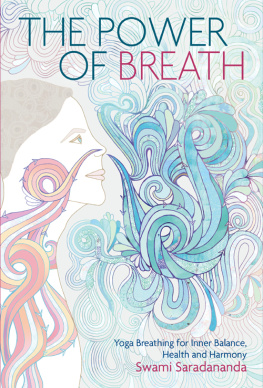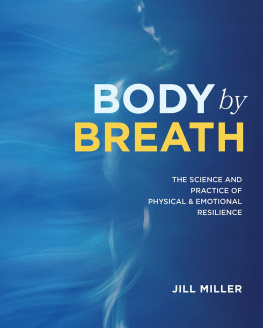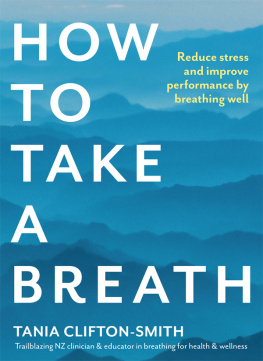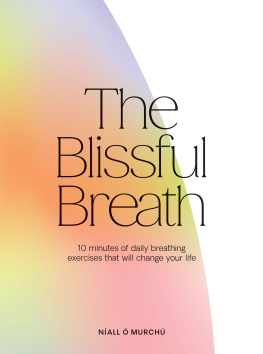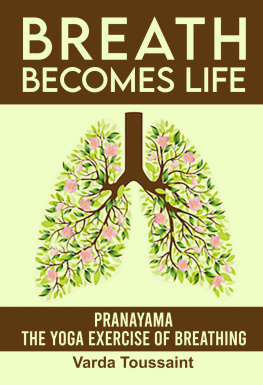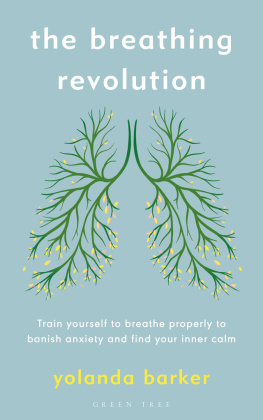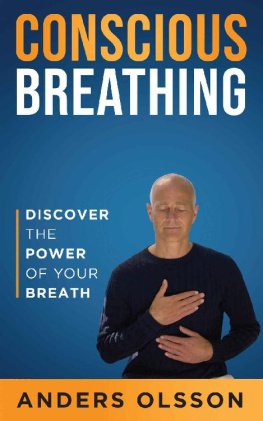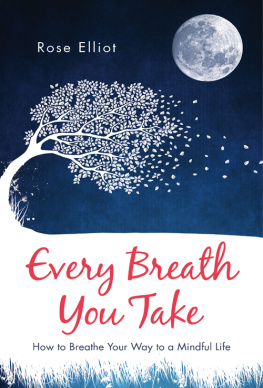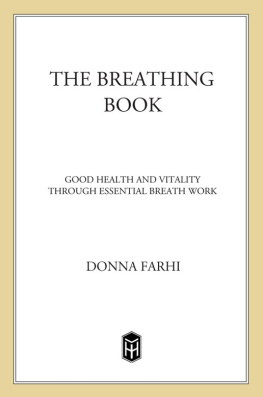THE POWER
OF BREATH
THE POWER
OF BREATH
Yoga Breathing for Inner Balance,
Health and Harmony
Swami Saradananda
THE POWER OF BREATH
Swami Saradananda
First published in the United Kingdom and Ireland in 2009 by
Watkins, an imprint of Watkins Media Limited
19 Cecil Court
London WC2N 4EZ
Copyright Watkins Media Limited 2009, 2016
Text copyright Swami Saradananda 2009, 2016
Photography copyright Watkins Media Limited 2009, 2016
Illustration copyright Watkins Media Limited 2009, 2016
The right of Swami Saradananda to be identified as the Author of this text has been asserted in accordance with the Copyright, Designs and Patents Act of 1988.
All rights reserved. No part of this book may be reproduced in any form or by any electronic or mechanical means, including information storage and retrieval systems, without permission in writing from the publisher, except by a reviewer who may quote brief passages in a review.
Managing Editor: Kirty Topiwala
Editor: Susannah Marriott
Editorial Assistant: Duncan Carson
Managing Designer: Manisha Patel
Designer: Saskia Janssen
Commissioned Photography: Jules Selmes
Illustrator: Lydia Hess
British Library Cataloguing-in-Publication Data:
A CIP record for this book is available from the British Library
ISBN: 978-1-78678-018-8
10 9 8 7 6 5 4 3 2 1
Typeset in Spectrum MT
Colour reproduction by Colourscan, Singapore Printed in China by Imago
Publishers note: The information in this book is not intended as a substitute for professional medical advice and treatment. If you are pregnant or are suffering from any medical conditions or health problems, it is recommended that you consult a medical professional before following any of the advice or practice suggested in this book. Watkins Media Limited, or any other persons who have been involved in working on this publication, cannot accept responsibility for any injuries or damage incurred as a result of following the information, exercises or therapeutic techniques contained in this book.
www.watkinspublishing.com
This book is dedicated to Swami Vishnu-devananda. In addition to being my spiritual teacher and mentor, he was a great master of pranayama.
And the Lord God formed man of the dust of the ground, and breathed into his nostrils the breath of life; and man became a living soul.
G ENESIS, 2.7
Contents
Introduction
Learning to breathe well is one of the most powerful ways to revitalize your body, mind and emotions. The benefits of breathing exercises are far-reaching. By maximizing your intake of oxygen and ridding your body of waste products, they boost every body system, helping you to feel and look both more vibrant and more relaxed, and to maintain a calm mind at times of tension. But the breathing exercises in this book offer more than this they give you the tools and insight you need to access your life-force. Yoga philosophy teaches that your breath is the physical manifestation of the vital energy that gives you the ability to live and breathe, move about and function in the world. It is this life-force that allows you to think, digest food, hear sounds, laugh, sneeze and carry out the numerous activities you engage in at any moment, both consciously and unconsciously. This vital energy, which animates every being, is described in many Eastern philosophies, and in India is known as prana. Though not material in nature, prana flows through every part of your body, interpenetrating each cell like water filling a sponge.
The exercises in this book help you to make more efficient use of your prana, which has five functions, each one described as a different type of energy (see right). Each main chapter is dedicated to one of these five forms of prana, and offers exercises to enhance, expand and express this. When all five energies are vibrant and balanced, health and vitality follow.
BREATHING FOR LIFE
The exercises in this book will enhance your vigour and wellbeing, but for maximum benefit, try to back them up with a healthy lifestyle. This includes eating more fruit, vegetables and wholegrains, exercising most days and giving up negative indulgences, such as smoking. In this book, you will find boxes offering breathing tips to make your work and home life more healthy. One of the best is simply to watch your breath through the day and take a few deep breaths, especially when you feel tense. Notice the effects on your mind, mood and body.
PRANA () is the first of the five forms of prana (sharing its name), governing inhalations. This is your vitalizing breath the dynamic force that enables you to take in all forms of energy.
SAMANA () is the second form of vital energy and processes the oxygen entering your lungs. This nourishing breath equips you to digest food and to understand thoughts and feelings.
VYANA () is the third form of vital energy and governs your circulation and the distribution of oxygen in your body. This is your expansive breath that distributes vital nourishment and equips you to expand into the world.
APANA () is the fourth form of vital energy and oversees exhalation and the release of carbon dioxide. As well as being a cleansing breath, it is the expelling force by which a child is born.
UDANA () is the fifth and final form of vital energy. It accompanies apana when you exhale, enabling your energy to rise up and find expression. This expressive breath gives you the energy you need to find a voice and turn your thoughts into action.
Whether you are new to breathing techniques or an experienced practitioner, it is best to begin by reading chapter 1, which outlines the benefits of breathwork, explains its theory and sets out techniques for cleansing your respiratory system and the basics of sitting to practise.
I hope this book will inspire you to try breath-enhancement techniques they are a perfect addition to a detox, healthy eating campaign or exercise regime, and help you to counter problems associated with busy lifestyles. But I also hope that as the exercises put you in touch with your energetic core, you experience a more profound understanding that your everpresent breath connects you to a power far greater than yourself.
The importance of breathing well
Of all the necessities in life, breathing is your most immediate. If you are a reasonably healthy person, you can probably go for about six weeks without food and for a few days without water. But without breathing, you would not survive for more than a few minutes.
Your breath is your most intimate companion on your journey through life. You began to breathe a moment after you were born and some day you will expire with your last exhalation. In between, your breath is with you wherever you go. Your breath is nearer to you than anything else, and dearer to you than your wealth and the people you love most for if you lose your breath, you lose everything. And yet, like most people, you probably rarely, if ever, think about how, or even why, you breathe.
Although no one can survive without breathing, many people manage to live a good portion of their lives without breathing properly. The stressful pace of modern life together with sedentary jobs and leisure pursuits contribute to unhealthy breathing habits by creating tension in your body that inhibits the full expansion of your chest. In the 30 years that I have been teaching yoga and meditation, I have found that even the most dedicated yogis often lack the insight, as well as the tools, to efficiently manage their breathing. But poor respiratory habits can take a heavy toll on your physical, mental and emotional health and happiness viruses and bacteria thrive, for example, when your body is oxygendeprived, while shallow breathing contributes to many chronic stressrelated health conditions.

